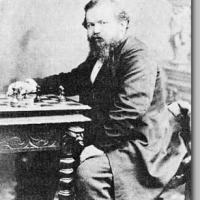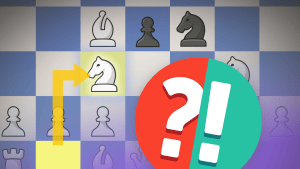I am frequently asked if the classical games played by great champions should be memorized. In my opinion it is not necessary. But what you should do for sure is to understand and memorize the key ideas of those games. If you learn typical patterns and manage to recognize them in your own games it will tremendously boost your playing strength.
When a beginner looks at a position on the board, in most cases he sees just a bunch of randomly placed pieces. When a master does the same, he immediately sees a bunch of typical patterns. Like that pawn formation on the Queen's side reminds me of one of Capablanca's games and that beautifully placed Nf5 helped Tal to checkmate his opponent in a similar situation and so on. I hope you got the idea and therefore from now on will look for typical patterns in every great game you analyze. To make your job easier, I'll help you to identify the key ideas of every single game we are going to analyze today.
(Just like in most of my articles I give you a chance to test your chess skills, so the games are given as a Quiz. Please remember that you can always replay the whole game from the first move if you click "Solution" and then "Move list".)
So, you replayed and enjoyed this beauty with excellent annotations by Garry Kasparov from his book "My Great Predecessors
" ( If you don't have this monumental work of the great Champion, I strongly recommend you to get all the volumes. The book is awesome!). You might think that the main pattern here is the Rook sacrifice. Meanwhile the chances that you get exactly the same position where the same Rook sac would work are not that great. But if you noticed how strong White's attack became after he planted his Knight on the central e5 square and supported it with two pawns, then this is the pattern that can easily be recreated in your own games. If you are interested in this pattern, we discussed a similar idea here:
botvinniks-legacy-part-twoThe next beautiful attacking game of Steinitz demonstrates another pattern you might want to remember.
Do you see what is the key idea of this game that you want to remember? If not, then check these two articles:
Now let's look at the next game, which is probably the best one Steinitz ever played.
As any truly great game it has many useful ideas to remember and of course the final combination is truly amazing. But the move that impressed me the most at the time when I first analyzed the game, was 17.d5!! The unprotected pawn goes to the square attacked three times. The point of the sacrifice is just to clear the central d4 square for the Knight and open the 'c' file. It was an eye-opener for me at that time. Later I saw many games where a pawn was sacrificed just to clear a square for your pieces, but still, this Steinitz game made the deepest impression on me, probably because I saw this idea here the first time. Here is another classical game that shows the same idea:
I hope you enjoyed the games, learned new ideas and hopefully will use them in your own games.
Good luck!


